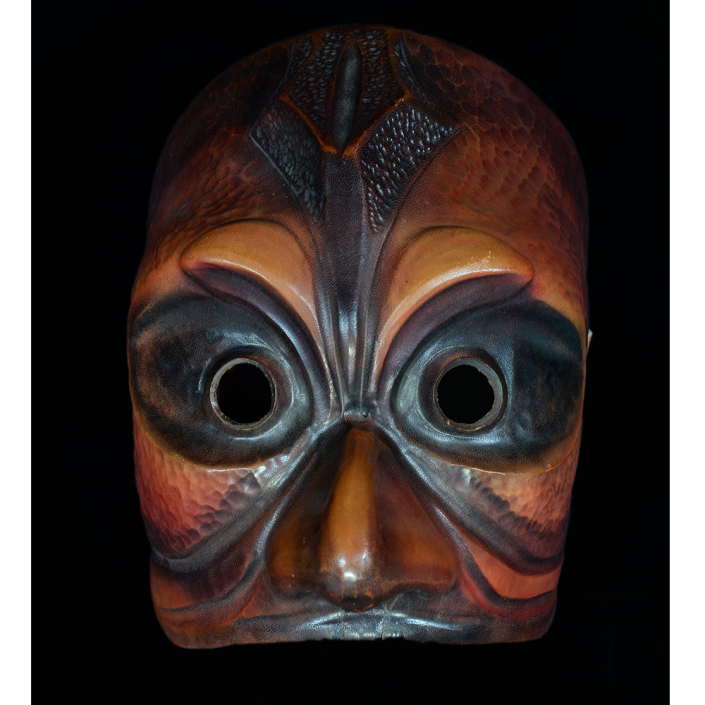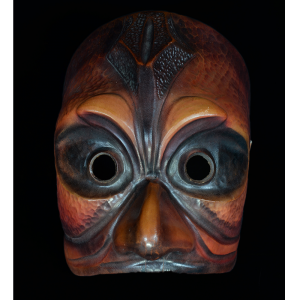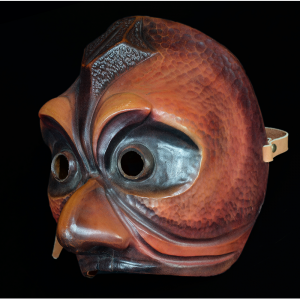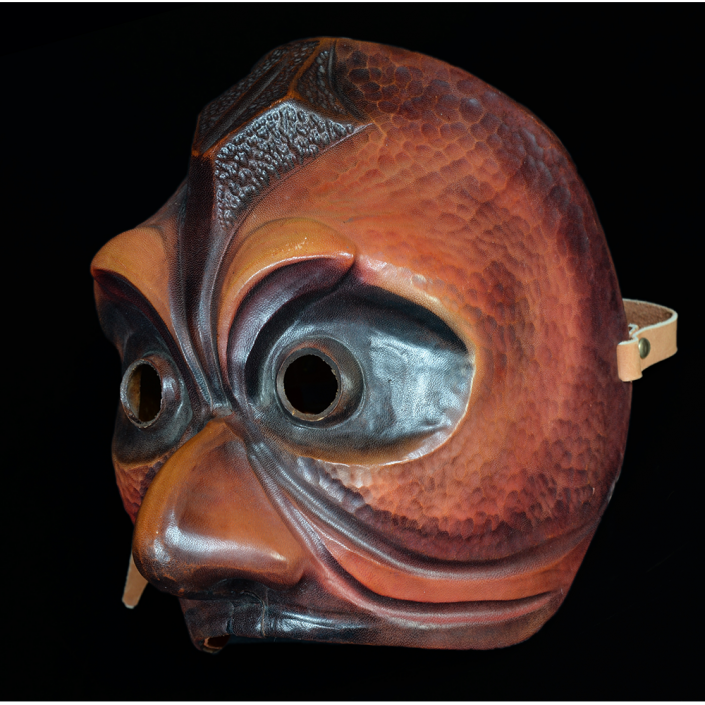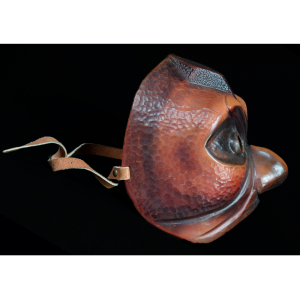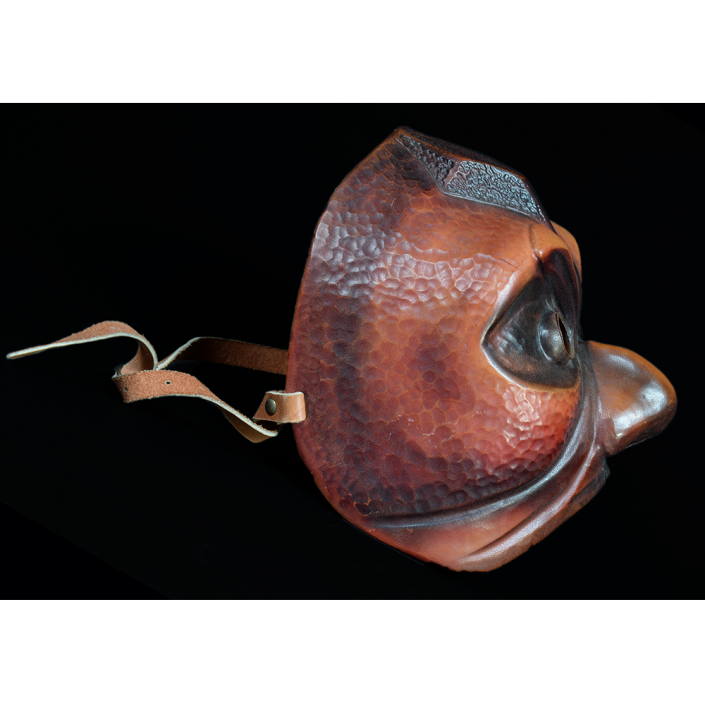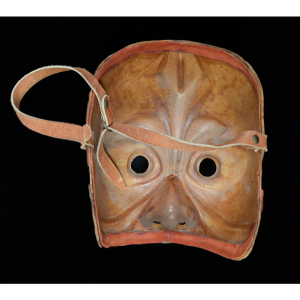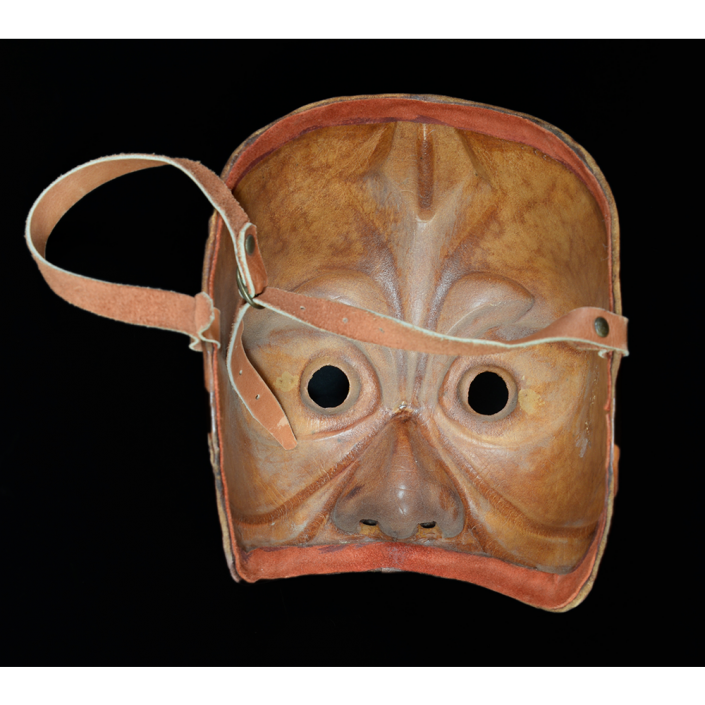TITLE: Commedia dell’Arte Zanni
TYPE: face mask
GENERAL REGION: Europe
COUNTRY: Italy
ETHNICITY: Italian
DESCRIPTION: Zanni Mask
CATALOG ID: EUIT002
MAKER: Cesare Ginoletti (?)
CEREMONY: Commedia dell’Arte; Carnival
AGE: ca. 1980s
MAIN MATERIAL: leather
OTHER MATERIALS: airbrushed paint; lacquer; hardware
The Commedia dell’Arte was a form of public entertainment that succeeded the classical Roman theater in Italy. Like classical theater, Commedia performers wore leather masks to represent stock characters and often performed in amphitheaters to large audiences. However, the Commedia differed in having only a very basic plot sketch, with most of the lines invented extemporaneously by the actors. The Commedia‘s ability to stay topical and its frequent resort to vulgar humor, combined with the considerable talent of Italian troupes that traveled throughout Europe, made this form of theater extremely popular throughout the early 17th to late 19th centuries. Masked actors had to compensate for their inability to convey facial emotion through posture, gesture, and vocal nuance.
Zanni (sometimes spelled Zani or Zane) is among the oldest stock characters of the Commedia. The Zanni is a servant. Originally, Zanni represented an immigrant who served the character known as Don Pantalone. The mask is always a half-mask to facilitate conversation, and the nose may be short or long. Usually, Zanni wears a peaked hat and carries a wooden sword. His personality was typically portrayed as voracious, coarse, loud, emotional, ignorant scoundrel who nonetheless could sometimes manage the impossible. Eventually, specific forms of Zanni, such as Arlecchino (Harlequin), Pulcinella (Punch) and Brighella became more popular.
To learn more about Commedia dell’Arte, see Pierre Louis Duchartre, The Italian Comedy (Dover Pubs., 1966).
